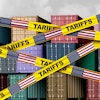
Verusen announced the results of its State of Supply Chain Inventory Management survey. The results from this inaugural research come at a pivotal time for enterprise supply chains as they continue to act in response to the global coronavirus pandemic and the completely unforeseen impacts it has caused―for which the large majority of organizations were unprepared.
The survey showed that while a majority of organizations rated their supply chains’ maturity levels at “high” or “highest,” only 10% felt fully prepared for the Coronavirus impacts. For most organizations, the impact from the pandemic has resulted in massive revenue losses along with employee layoffs and has now put the spotlight squarely on budgets along with the preservation of cash and working capital.
“It’s clear the pandemic has forced manufacturing organizations into two distinct operating modes,” said Paul Noble, founder and CEO of Verusen. “Either they’re focused solely on countering the daily demand shifts with a ‘keep the boat afloat’ mindset where they only spend on critical, must-have materials, or they’ve committed to reshaping themselves to better protect their supply of raw materials and components to build a more resilient supply chain that’s architected more regionally than globally.”
Among the research’s other findings:
· Within the first 60 days of the COVID-19 pandemic, the number one priority for supply chain organizations was to preserve cash and manage working capital. However, in looking toward a post-COVID-19 landscape, the focus areas have shifted to managing Tier-1 supplier risk and workforce planning.
· Nearly 71% of supply chain professionals felt indirect materials management―and managing the associated data―was an important optimization strategy during the pandemic. However, few organizations feel as though they have an “excellent” handle on indirect materials optimization. They see lack of resources and lack of clean data as challenges to that strategy.
· Oddly enough, a majority of those supply chains are still using common tools, such as Excel spreadsheets, or have no optimization technology in place to advance these initiatives.
“Before the Coronavirus hit, we were already seeing progressive organizations use artificial intelligence and related technologies to redefine and transform their supply chains into intelligently connected ecosystems,” said Jeff Wilson, Verusen CRO. “While our research showed that only one-third of supply chains were already using AI for optimization of materials data and inventory prior to the pandemic, we expect that utilization to increase dramatically as organizations look for technologies that offer the necessary speed, scale and financial return to build a more resilient supply chain―one that’s COVID-19 proof and can mitigate the consequences of similar events in the future.”
The 2020 State of Supply Chain Inventory Management report represents insight and perspectives from materials supply chain and inventory management professionals around the world. The survey was administered online as well as through email and social media channels during July 2020. Survey respondents represented a variety of organizations in size, geographic location and industry, with the highest response rate coming from North America. Responses came from supply chain professionals with titles of manager/senior manager and above. Verusen’s State of Supply Chain Inventory Management research will be conducted on an annual basis.

















![Pros To Know 2026 [color]](https://img.sdcexec.com/mindful/acbm/workspaces/default/uploads/2025/08/prostoknow-2026-color.mduFvhpgMk.png?ar=16%3A9&auto=format%2Ccompress&bg=fff&fill-color=fff&fit=fill&h=135&q=70&w=240)